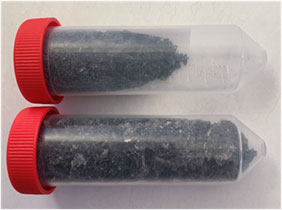Development of Hybrid Pulse Power Device Using Semiconductor 3D-Graphitic Carbon
The rapid depletion of fossil fuels and increasing demand for portable energy storage devices pave the way for a new research field to store harvested energy. The development of efficient portable energy storage devices for portable electronic circuits has become a major research interest. The batteries are suffering from low cyclic stability and high safety risk factors. The electrochemical capacitor or super-capacitor has the features of a high surface-to-volume ratio, a carbon or metal compound-based electrode, and solid polymer or ionic liquid-based electrolytes.
The carbon- and carbon-based allotropes are adequate to make super capacitors because of their high chemical stability, good electrical conductivity, and abundant availability. Among the carbon allotropes, graphene is a unique material due to its excellent physicochemical properties, such as a high surface-to-volume ratio, metal-like electrical conductivity, good thermal conductivity, tremendous mechanical and chemical stability, etc. Therefore, the present proposal is based on 3D-graphene, like a network of doped heteroatoms. Interestingly, depending on the doped atoms, graphene can behave like a p-type or n-type semiconductor. Herein, both types of semi-conductors will be produced, whereas p-type semiconductor graphene will be used as cathode and n-type semiconductor will be used as anode electrode. Additionally, non-aqueous electrolytes with specific ionic liquids will be applied to construct the pouch cell, whereas the expected outcome voltage is 2.8 V from every cell with outstanding power density and power deliverable capability.
Many pioneer industries in India are making huge research efforts to construct carbon/graphene-based supercapacitors. Through the present methodology, mass production and industrialization are targeted.

For More Details Contact Us
